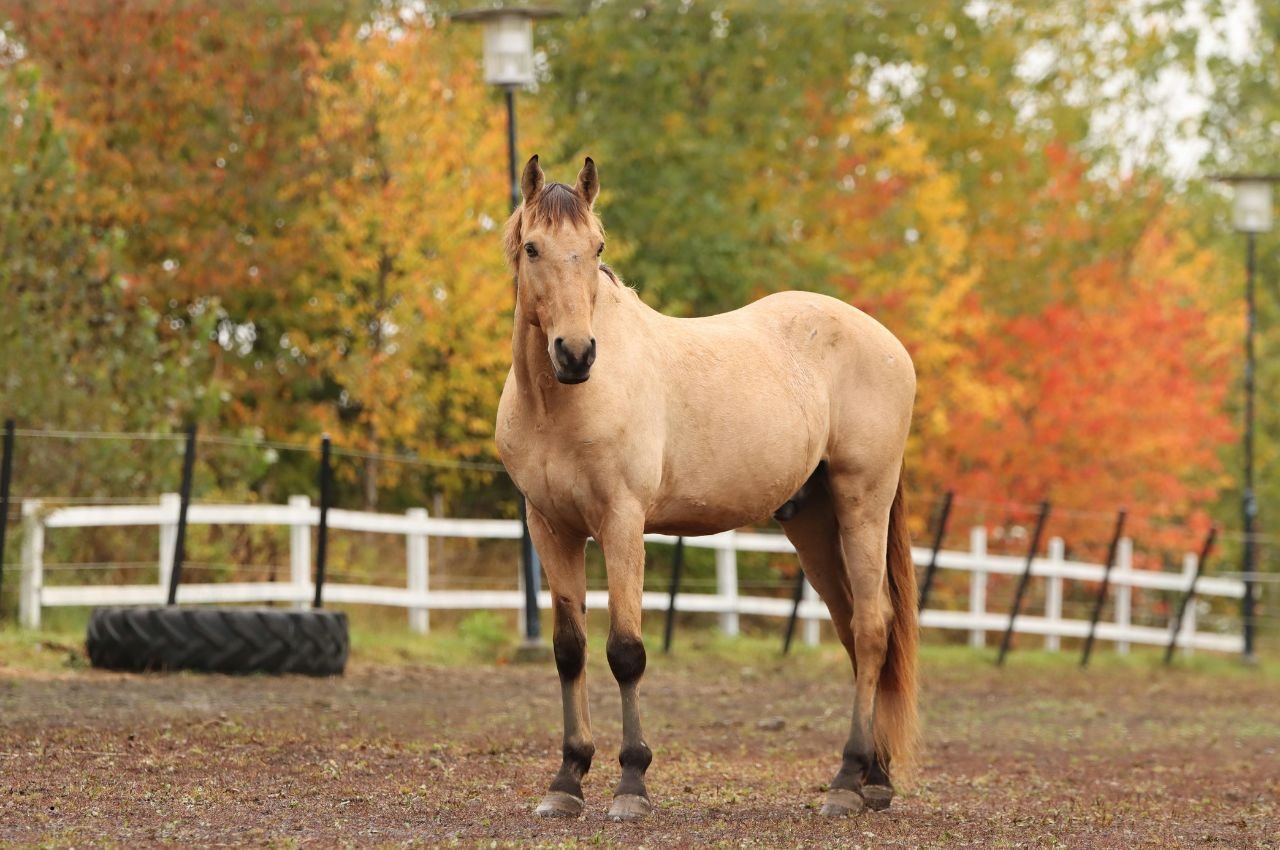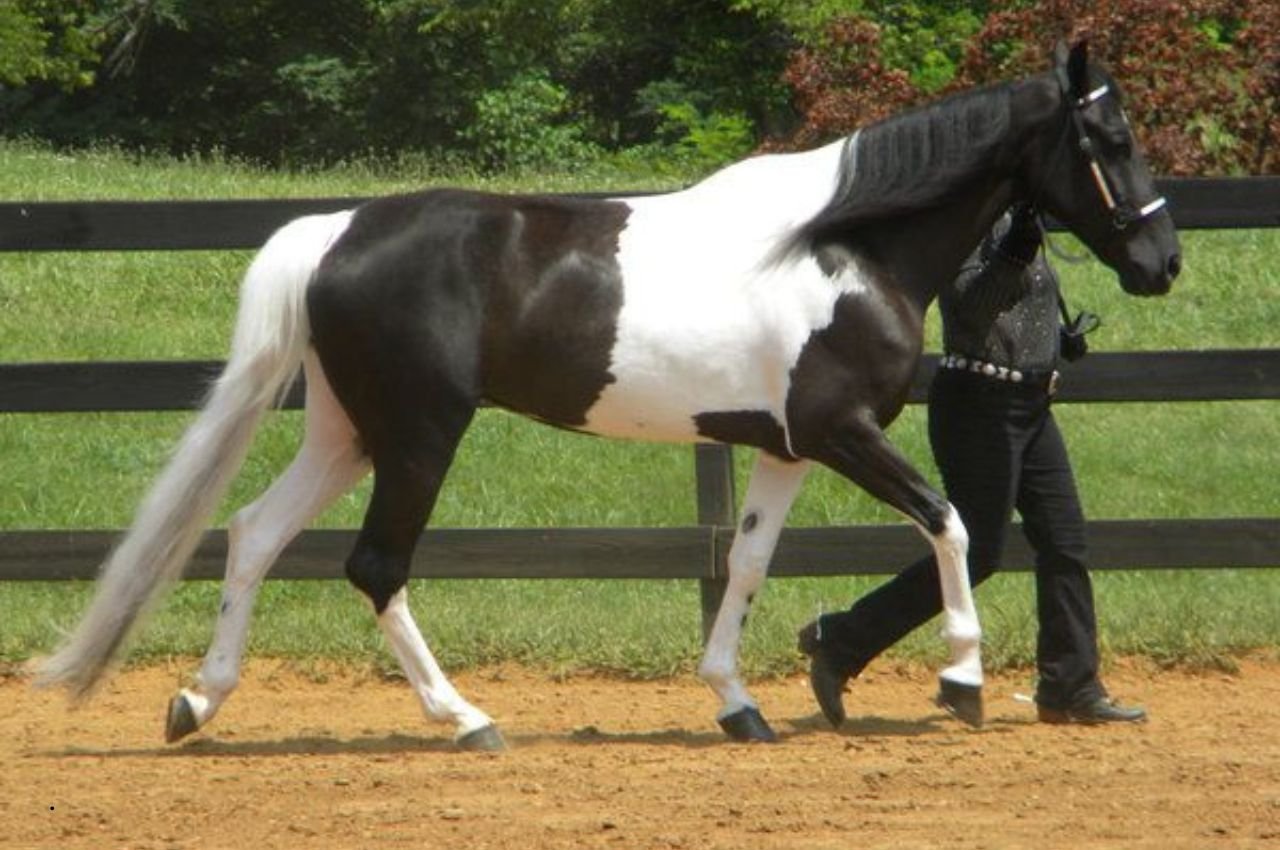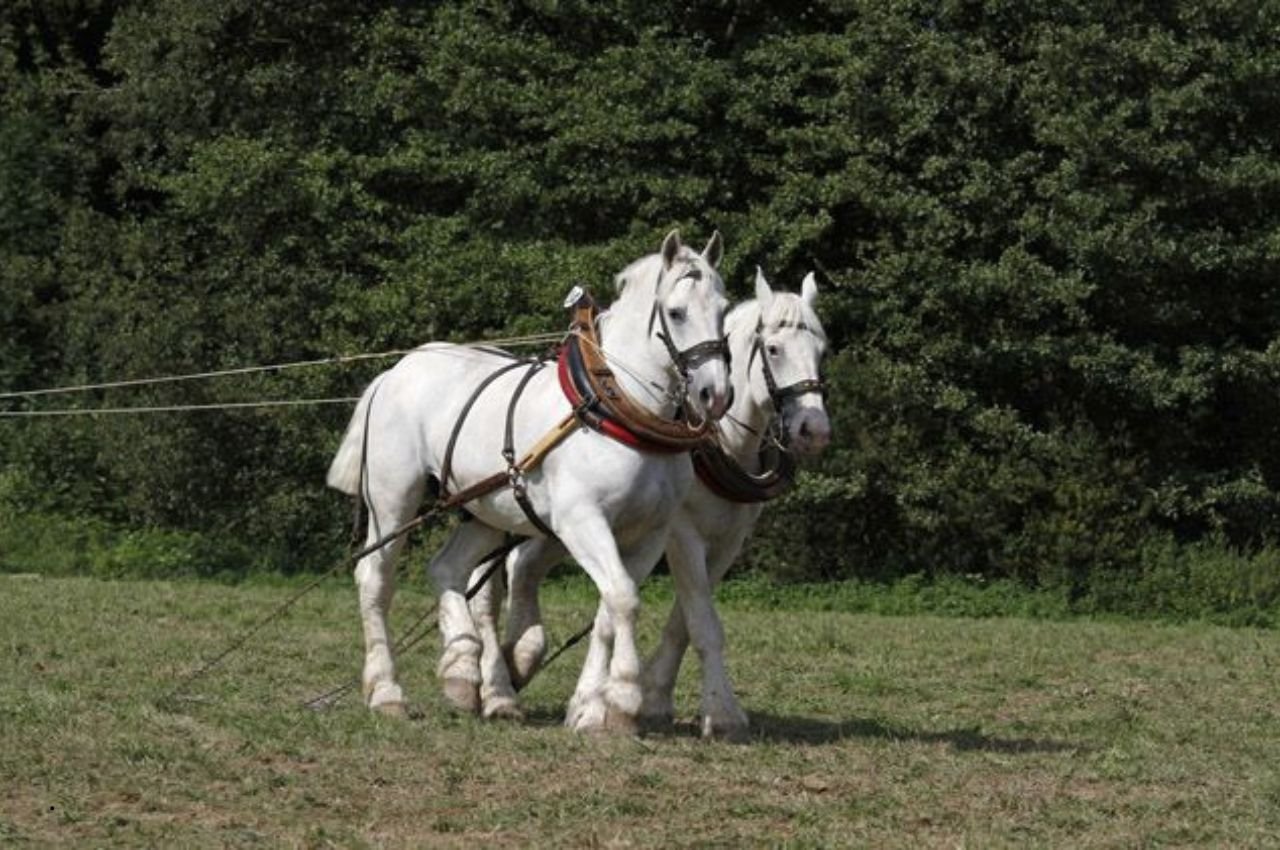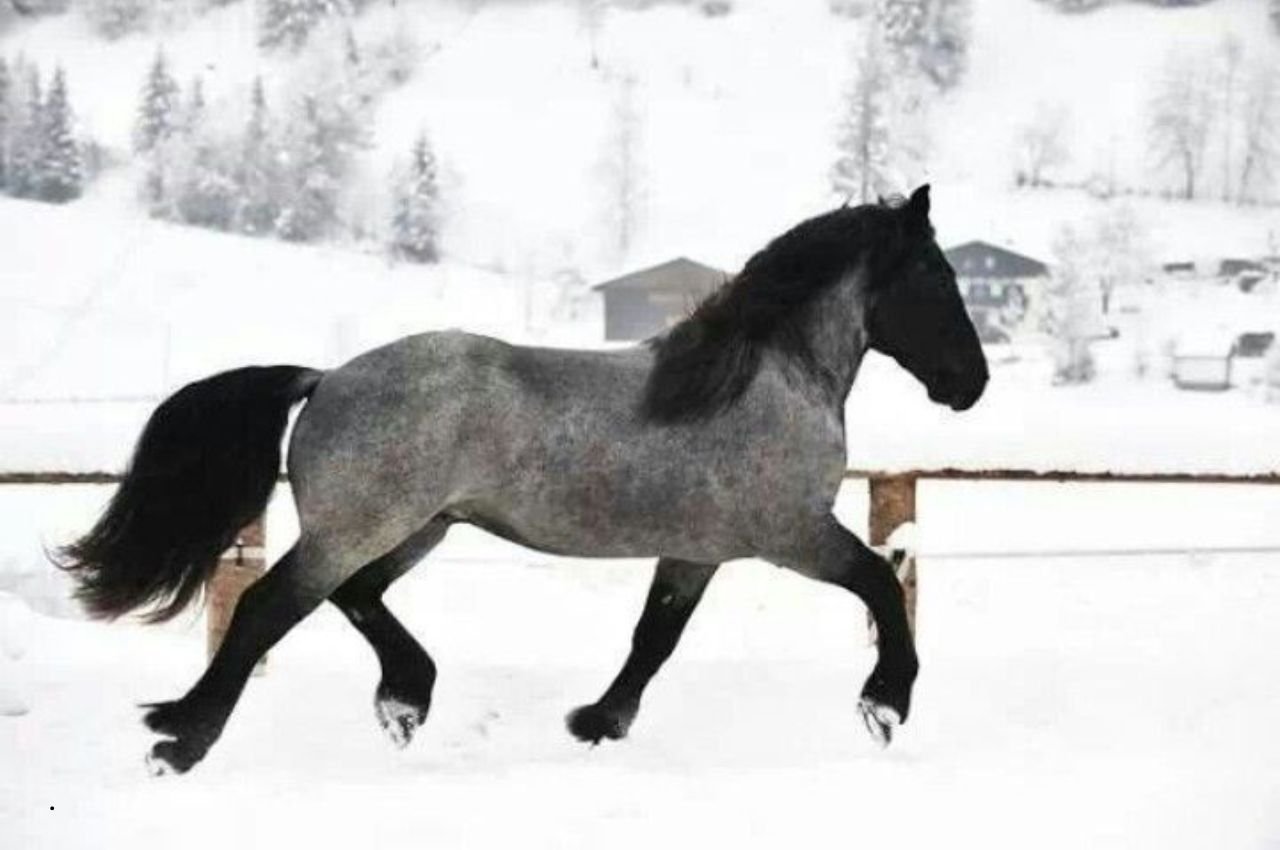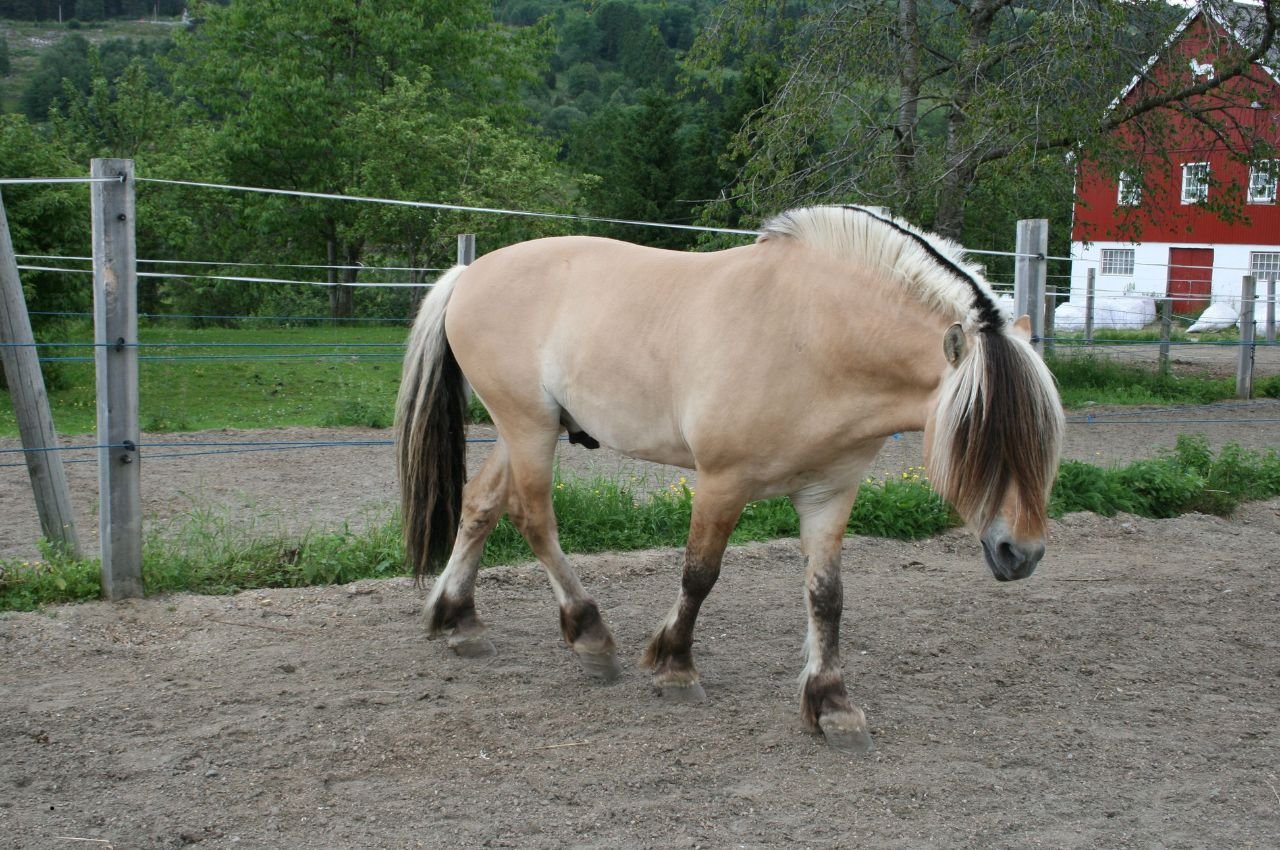Introduction
The Haflinger horse, with its distinctive golden chestnut coat and flowing white mane, stands as one of the world’s most recognizable and beloved horse breeds. Originating from the mountainous regions of Austria and Italy, these hardy ponies have captured hearts worldwide with their exceptional versatility, gentle nature, and remarkable athletic ability. Despite their compact size, Haflingers possess the strength and endurance that made them invaluable in their Alpine homeland and continue to make them excellent partners in numerous equestrian disciplines today.
Breed History and Origins
Ancient Beginnings
The Haflinger’s ancestry can be traced back over 500 years to the medieval period in the South Tyrolean region of the Austrian and Italian Alps. The breed’s development centered around the village of Hafling (now called Avelengo in Italy), from which the breed derives its name. Historical records suggest that the foundation of the modern Haflinger began in 1874 with a stallion named 249 Folie, who was bred to local mares and became the foundation sire of the breed.
Foundation Bloodlines
The Haflinger breed development involved careful selection from local mountain horses, with influences from Arabian bloodlines that added refinement and stamina. The breed’s development was systematically managed by Austrian and Italian breeders who prioritized hardiness, sure-footedness, and the distinctive coloring that makes Haflingers so recognizable.
Modern Development
The breed nearly faced extinction during World War II, but dedicated breeding programs in Austria and Italy preserved and rebuilt the population. In the post-war period, Haflingers spread throughout Europe and eventually to North America, Australia, and other continents, where they have thrived and adapted to various climates and uses.
Physical Characteristics and Size
General Size and Build
Haflingers are classified as a pony breed, though their substantial build and strength often make them seem larger than their actual height suggests.
Height Standards:
- Mares and Geldings: 13.2 to 15.0 hands high (54-60 inches)
- Stallions: 14.0 to 15.0 hands high (56-60 inches)
- Average height: 14.0 to 14.2 hands high
Weight Range:
- Mature horses: 800 to 1,300 pounds
- Average weight: 900 to 1,100 pounds
Distinctive Physical Features
Coat Color: The Haflinger’s most distinctive feature is its consistent coloring:
- Body color: Chestnut ranging from light gold to dark liver chestnut
- Mane and tail: White to flaxen, always lighter than the body
- Markings: White markings on face and legs are acceptable but should be minimal
Conformation Standards:
- Head: Refined with a slightly dished profile, large expressive eyes, and small alert ears
- Neck: Well-muscled and slightly arched, blending smoothly into the shoulders
- Shoulders: Sloping and muscular, allowing for good movement
- Body: Compact with a deep chest, strong back, and well-sprung ribs
- Hindquarters: Powerful and well-muscled with good length
- Legs: Strong with good bone, clean joints, and hard hooves
- Movement: Free-flowing, elastic gaits with natural balance and rhythm
Temperament and Character
Personality Traits
Haflingers are renowned for their exceptional temperament, making them suitable for riders and drivers of all ages and experience levels.
Key Temperament Characteristics:
- Gentle and Patient: Known for their calm, forgiving nature
- Intelligent: Quick learners with excellent problem-solving abilities
- Willing: Eager to please and cooperative in training
- Hardy: Resilient and adaptable to various conditions
- Social: Generally good with other horses and people
- Trustworthy: Reliable and steady in various situations
Behavioral Traits
- Work Ethic: Strong desire to work and please their handlers
- Curiosity: Inquisitive nature that makes them engaging companions
- Sensible: Level-headed approach to new situations
- Longevity: Often maintain their gentle nature well into old age
- Child-Friendly: Excellent temperament for young or inexperienced riders
Training Characteristics
Haflingers respond exceptionally well to positive training methods:
- Quick to learn new skills and retain training
- Respond best to consistent, patient handling
- Excel in both ground work and under saddle training
- Adapt well to various disciplines and activities
Versatility and Uses
The Haflinger’s versatility is perhaps their greatest asset, making them suitable for an incredibly wide range of activities and disciplines.
Traditional Uses
Mountain Work:
- Pack animals in Alpine regions
- Forestry and logging operations
- Agricultural work in mountainous terrain
- Transportation in difficult terrain
Military Service:
- Used by Austrian and Italian armies
- Pack animals and cavalry mounts
- Transportation in mountain warfare
Modern Disciplines
Riding Disciplines:
- Dressage: Natural balance and movement make them competitive through mid-levels
- Jumping: Careful and athletic over fences, suitable for lower-level competition
- Trail Riding: Excellent trail horses with sure feet and calm temperaments
- Western Riding: Adaptable to Western disciplines including pleasure and trail
- Therapeutic Riding: Ideal size and temperament for therapy programs
Driving Disciplines:
- Combined Driving: Excel in all phases of combined driving competitions
- Pleasure Driving: Perfect size for recreational driving
- Competitive Driving: Successful in marathon and obstacle driving
- Commercial Driving: Tourism and carriage services
Specialized Activities:
- Endurance Riding: Natural stamina and hardiness
- Working Equitation: Versatility suits this multi-discipline sport
- Vaulting: Steady temperament ideal for gymnastic vaulting
- Packing and Camping: Traditional mountain skills translate to modern trail packing
Age Group Suitability
- Children: Size and temperament make them ideal first horses
- Adult Amateurs: Forgiving nature perfect for returning riders
- Seniors: Manageable size and gentle nature
- Professional Training: Responsive to advanced training methods
Health Considerations
Haflingers are generally healthy and hardy, but like all breeds, they have some specific health considerations.
Common Health Issues
Metabolic Conditions:
- Easy Keeper Syndrome: Tendency to gain weight easily
- Insulin Resistance: Can develop metabolic issues if overweight
- Laminitis: Risk increases with obesity and rich pastures
- Cushing’s Disease: May be more prevalent in older Haflingers
Genetic Considerations:
- Oculo-Skeletal-Phosphaturia (OSP): Rare genetic condition specific to Haflingers
- Eye Problems: Occasional issues with cataracts or other eye conditions
- Joint Issues: Generally sound but may develop arthritis with age
Preventive Health Care
Regular Veterinary Care:
- Annual vaccinations according to local requirements
- Biannual dental examinations due to small head size
- Regular deworming based on fecal egg count testing
- Routine health assessments including weight monitoring
Hoof Care:
- Regular farrier visits every 6-8 weeks
- Natural hoof hardiness but requires consistent care
- Monitor for signs of laminitis, especially in overweight horses
Weight Management:
- Critical due to easy keeper tendencies
- Regular body condition scoring (target: 4-6 on 9-point scale)
- Seasonal weight monitoring and feed adjustments
Diet and Nutrition
Proper nutrition is crucial for maintaining Haflinger health, particularly given their tendency to be easy keepers who gain weight readily.
Basic Nutritional Requirements
Forage Foundation:
- High-quality forage should comprise 60-100% of the diet
- 1.5-2.0% of body weight in dry matter daily
- Grass hay typically preferred over legume hay
- Pasture access should be managed to prevent overconsumption
Energy Requirements by Activity Level:
- Maintenance: 14-16 Mcal digestible energy per day
- Light Work: 16-20 Mcal digestible energy per day
- Moderate Work: 20-24 Mcal digestible energy per day
- Heavy Work: 24-28 Mcal digestible energy per day
Protein Needs:
- Maintenance: 8-10% crude protein in total diet
- Growing Horses: 12-14% crude protein
- Pregnant/Lactating Mares: 11-13% crude protein
- Working Horses: 10-12% crude protein
Feed Management Strategies
Weight Control (Critical for Haflingers): Given their easy keeper nature, careful feed management is essential:
Pasture Management:
- Use rotational grazing to prevent overgrazing
- Consider strip grazing for overweight horses
- Grazing muzzles may be necessary during rich grass seasons
- Limit access to lush spring and fall pastures
Hay Selection:
- Choose grass hays over legume hays
- Test hay for sugar and starch content (ideal: combined NSC under 12%)
- Soak hay if sugar content is high
- Use slow-feed hay nets to extend eating time
Concentrate Feeding:
- Many Haflingers require little to no grain
- If concentrates are needed: 0.25-0.5% of body weight daily
- Choose low-starch, high-fiber feeds
- Feed multiple small meals rather than large ones
Specific Feed Types and Recommendations
Forage Options:
- Timothy Hay: Excellent base forage, moderate protein and energy
- Orchard Grass: Good alternative, slightly higher energy than timothy
- Mixed Grass Hays: Often ideal blend of nutrition and palatability
- Mature Grass Hays: Lower energy, good for easy keepers
- Avoid: Rich alfalfa except for hard keepers or lactating mares
Concentrate Options for Working Horses:
- Beet Pulp: Excellent high-fiber, low-starch option
- Rice Bran: Adds calories without excessive starch
- Senior Feeds: Often appropriate due to high fiber, low starch
- Ration Balancers: Provide protein, vitamins, minerals in small quantities
Supplements:
- Salt: 1-2 ounces daily, loose salt preferred
- Minerals: Balanced mineral supplement if forage testing shows deficiencies
- Vitamin E: Especially important if hay is stored long-term
- Omega-3 Fatty Acids: Flax or fish oil for coat and joint health
Special Dietary Considerations
Easy Keepers:
- Monitor body condition score weekly
- Reduce feed before increasing exercise
- Use hay nets and slow feeders
- Consider lower-energy forage options
- May need muzzles during turnout
Hard Keepers (Rare in Haflingers):
- Increase feed frequency to 3-4 times daily
- Add fat sources like rice bran or vegetable oil
- Ensure adequate protein intake
- Check for underlying health issues
Senior Horses:
- May need easily digestible feeds
- Increase feeding frequency
- Soften hay if dental issues present
- Monitor weight closely as metabolism changes
Pregnant and Lactating Mares:
- Increase energy and protein in final trimester
- High-quality nutrition essential during lactation
- May need concentrates even if typically easy keepers
- Ensure adequate calcium and phosphorus
Feeding Schedule Recommendations
Basic Daily Schedule:
- 6:00 AM: Morning hay feeding
- 12:00 PM: Midday hay (if multiple feedings needed)
- 6:00 PM: Evening hay and any concentrates
- Free access: Water and salt
Working Horse Schedule:
- Feed 2-4 hours before work
- Small hay meal 1-2 hours before exercise
- Avoid large grain meals before work
- Post-exercise feeding after cooling out
Breeding and Genetics
Breeding Characteristics
- Maturity: Mares typically bred at 3-4 years old
- Fertility: Generally good fertility rates
- Gestation: Standard 11-month gestation period
- Foaling: Usually uncomplicated due to hybrid vigor
- Maternal Ability: Excellent mothers with strong maternal instincts
Genetic Considerations
- Color Genetics: Chestnut with flaxen mane and tail is genetically consistent
- Size Inheritance: Size tends to breed true with some variation
- Temperament: Gentle nature is highly heritable
- Health Testing: OSP testing available and recommended
Registry Requirements
Most Haflinger registries maintain strict standards for registration:
- Color Requirements: Must be chestnut with light mane and tail
- Conformation Standards: Must meet breed type requirements
- Performance Testing: Many registries require performance evaluations
- Breeding Approvals: Stallions typically require licensing
Care and Management
Daily Care Requirements
Grooming:
- Daily grooming to maintain coat and mane condition
- Special attention to the distinctive flaxen mane and tail
- Regular hoof picking and inspection
- Seasonal coat care adjustments
Exercise Needs:
- Require regular exercise to maintain fitness and prevent obesity
- Minimum 1-2 hours daily turnout or exercise
- Adapt well to various exercise routines
- Mental stimulation as important as physical exercise
Housing:
- Adaptable to various housing situations
- Prefer turnout with other horses
- Need shelter from extreme weather
- Adequate ventilation essential
Seasonal Management
Spring:
- Monitor for laminitis risk during grass growth
- Gradually transition to pasture
- Implement weight management strategies early
Summer:
- Provide shade and fresh water
- Monitor for heat stress in humid climates
- Adjust feeding based on pasture quality
Fall:
- Continue weight monitoring during rich grass period
- Begin preparing for winter feeding
- Increase hay as pasture quality declines
Winter:
- Increase forage to maintain body temperature
- Ensure adequate shelter
- Monitor water sources to prevent freezing
Economic Considerations
Initial Investment
Purchase Price Range:
- Weanlings: $1,500 – $5,000
- Started horses: $5,000 – $15,000
- Trained horses: $10,000 – $30,000
- Premium breeding stock: $15,000+
Factors Affecting Price:
- Age and training level
- Bloodlines and registration
- Competition record
- Geographic location
- Market demand
Ongoing Costs
Monthly Expenses:
- Feed: $100 – $250 (varies by region and horse needs)
- Boarding: $300 – $800 (varies significantly by location)
- Farrier: $35 – $80 every 6-8 weeks
- Routine Veterinary: $25 – $50 monthly average
Annual Costs:
- Basic Care: $3,000 – $6,000 annually
- Competition Costs: Additional $2,000 – $10,000
- Insurance: $300 – $1,000 annually (optional)
- Training: $500 – $3,000 depending on level
Cost-Saving Strategies
- Home Boarding: Can significantly reduce costs
- Preventive Care: Reduces emergency veterinary expenses
- Pasture Management: Reduces feed costs
- Basic Training Skills: Reduces professional training costs
Training and Development
Basic Training Principles
Haflingers respond exceptionally well to positive, consistent training methods:
Foundation Training:
- Start with thorough ground work
- Emphasis on respect and trust building
- Progressive training methods work best
- Consistency in handling and expectations
Under Saddle Development:
- Natural balance makes them easy to start
- Patient approach yields best results
- Versatility allows for various disciplines
- Regular work maintains fitness and mental engagement
Age-Appropriate Training
Yearlings (1-2 years):
- Basic handling and leading
- Grooming and hoof care acceptance
- Loading and travel preparation
- Social development with other horses
Young Horses (2-4 years):
- Ground driving preparation
- Introduction to tack and equipment
- Basic riding or driving training
- Conditioning and fitness development
Mature Horses (4+ years):
- Advanced training in chosen disciplines
- Specialty skill development
- Competition preparation
- Ongoing fitness and skill maintenance
Global Presence and Registries
Major Registries Worldwide
European Registries:
- Haflinger Tyrol (Austria/Italy) – Original registry
- German Haflinger Federation
- Swiss Haflinger Association
- Various national European associations
North American Registries:
- American Haflinger Registry (AHR)
- Canadian Haflinger Association
- Regional breed associations
Other International Presence:
- Australian Haflinger Association
- Various South American associations
- Growing presence in Asia and Africa
Registry Services
Most registries provide:
- Registration and documentation services
- Breeding stock evaluation and approval
- Performance testing and recording
- Educational resources and breed promotion
- Show and competition sanctioning
Future of the Breed
Breeding Goals
Modern Haflinger breeding focuses on:
- Maintaining traditional type and temperament
- Improving athletic ability for sport disciplines
- Preserving hardiness and versatility
- Expanding genetic diversity
- Health testing and improvement
Conservation Status
The Haflinger breed is considered stable with:
- Strong populations in traditional breeding areas
- Expanding international presence
- Active breeding programs worldwide
- Good genetic diversity maintenance
- Strong market demand
Emerging Trends
- Increased use in therapeutic riding programs
- Growing popularity in competitive driving
- Development of sport horse qualities
- Expansion into new geographic markets
- Integration with sustainable agriculture practices
Conclusion
The Haflinger horse represents a perfect combination of beauty, versatility, and temperament that has made it one of the world’s most beloved breeds. Their distinctive golden color, compact size, and gentle nature make them ideal partners for riders and drivers of all ages and abilities.
From their origins in the Austrian and Italian Alps to their global presence today, Haflingers have proven their adaptability and value across cultures and climates. Their versatility allows them to excel in numerous disciplines while maintaining the hardy, reliable character that made them indispensable in their mountain homeland.
The breed’s most significant characteristics – their easy keeper nature and gentle temperament – require thoughtful management but reward owners with years of faithful service. Proper nutrition, particularly weight management, combined with appropriate exercise and care, ensures these horses can perform well into their twenties.
For those considering a Haflinger, the breed offers an excellent entry point into horse ownership or a reliable partner for experienced equestrians. Their forgiving nature, combined with athletic ability and intelligence, makes them suitable for virtually any equestrian pursuit.
The future of the Haflinger breed looks bright, with active breeding programs maintaining quality while expanding their capabilities. As more people discover the joy of working with these golden horses, the Haflinger’s reputation as one of the world’s most versatile and beloved breeds continues to grow.
Whether used for competitive sports, therapeutic work, recreational riding, or simply as cherished companions, Haflingers continue to demonstrate why they have captured hearts around the world. Their unique combination of beauty, brains, and gentle temperament ensures that the Haflinger horse will remain a favorite for generations to come.
References and Resources
Official Breed Registries and Organizations
- American Haflinger Registry: https://www.haflingerregistry.org/
- Haflinger Association of Australia: https://www.haflinger.asn.au/
- Canadian Haflinger Association: https://www.canadianhaflinger.ca/
- World Haflinger Federation: https://www.haflinger-wsv.com/
- European Haflinger Federation: https://www.haflinger-federation.com/
Scientific and Educational Resources
- Journal of Equine Veterinary Science: https://www.sciencedirect.com/journal/journal-of-equine-veterinary-science
- American Association of Equine Practitioners: https://aaep.org/
- University of Kentucky Gluck Equine Research Center: https://gluck.ca.uky.edu/
- Cornell University College of Veterinary Medicine: https://www.vet.cornell.edu/
- Colorado State University Equine Sciences: https://equinesciences.colostate.edu/
Nutritional and Health Resources
- National Research Council Nutrient Requirements: https://nap.nationalacademies.org/
- Kentucky Equine Research: https://ker.com/
- The Horse Magazine: https://thehorse.com/
- SmartPak Equine Health Library: https://www.smartpakequine.com/content/
- Mad Barn Equine Nutrition: https://madbarn.com/
Professional Organizations
- International Association of Equine Nutritionists: http://www.equine-nutritionists.org/
- American Horse Council: https://horsecouncil.org/
- United States Equestrian Federation: https://www.usef.org/
- Federation Equestre Internationale: https://www.fei.org/
Feed Companies and Nutritional Resources
- Purina Animal Nutrition: https://www.purinamills.com/horse-feed
- Triple Crown Feeds: https://www.triplecrownfeed.com/
- Nutrena World: https://www.nutrenaworld.com/
- Standlee Premium Western Forage: https://standleeforage.com/
Breed-Specific Resources and Databases
- All Breed Pedigree Database: https://www.allbreedpedigree.com/
- Horse & Hound Magazine: https://www.horseandhound.co.uk/
- Practical Horseman Magazine: https://practicalhorsemanmag.com/
- Equine Network: https://equinenetwork.com/
Veterinary Colleges and Research
- UC Davis School of Veterinary Medicine: https://www.vetmed.ucdavis.edu/
- Virginia Tech Marion duPont Scott Equine Medical Center: https://www.vetmed.vt.edu/
- University of Florida College of Veterinary Medicine: https://www.vetmed.ufl.edu/
- Michigan State University College of Veterinary Medicine: https://cvm.msu.edu/
Training and Competition Resources
- United States Dressage Federation: https://www.usdf.org/
- American Driving Society: https://www.americandrivingsociety.org/
- North American Trail Ride Conference: https://natrc.org/
- Professional Association of Therapeutic Horsemanship: https://www.pathintl.org/


